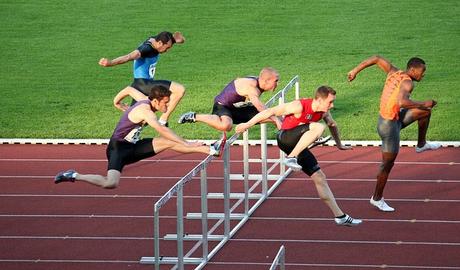Metabolic Responses to Exercise in the Heat – Scientific Analysis
For information purposes only. Exercise at your own risk
Any team or athlete that competes on an international stage will no doubt have to deal with the physiological challenges that extreme environments can present them with. Competing in extreme heat, is beyond a challenge, it can be life threatening.
Heat is transferred from the core, via the blood to the skin, and then to the environment via:
Conduction: heat transfer from one material to another through direct molecular contact e.g. skin surface to clothing
Convection: Transferring heat by the motion of a gas or liquid e.g. skin to moving air
Radiation: heat transfer in the ford of infrared rays, e.g. heat gain by sun exposure
Evaporation: as fluid evaporates, usually sweat, heat is lost (approx 80% of total heat loss when active).

Heat exchange is controlled in the brain.
Thermoreceptors in the hypothalamus monitor blood temperature as it flows through the brain. Peripheral receptors in the skin monitor environmental temperature providing information to the hypothalamus and cerebral cortex allowing behavioural changes to be made.
For example, hypothalamus signals sweat glands to secret sweat when it has determeined that the blood temperature is high.
Smooth muscle around arterioles ma also become dilated, increasing blood flow to the skin, and in turn, heat lost to the environment from the body.

Exercise in the heat results in a reduction in endurance and in intermittent exercise performance. According to Maughan (1992), loses as small as 2% of boy mass impairs performance. A study conducted by Suzuki et al, showed that cycling time to exhaustion at 66% of max aerobic capacity, was 91 minutes at 0 degress Celsius and 19 minutes at 40 degrees Celsius, whilst Adams et al showed that a well train runner was exhausted after 165 minutes at 10 celsius, compared to 102 minutes at 35 celsius.
There are a number of ‘problems’ that the body faces when exercising in the heat. There is competition between active muscles and skin for a limited blood supply. Heart rate increases to compensate for the decreased stroke volume. Redistribution of blood reduces the amount of blood that returns to the heart. Inability of the body to meet all the demands for blood flow results in hyperthermia. In addition, reduced blood supply to the muscle may result in greater reliance on muscle glycogen and anaerobic energy production, resulting in a greater and more immediate accumulation of blood lactate.
In addition to this, an individual’s body temperature may also be influenced by hormone fluctuations. For example, there can be a sharp elevation in core temperature (0.5-0.75 celsius) on day 14 of a menstrual cycle.
Stay Hydrated Whilst Exercising in the Heat
For every liter of sweat lost, rectal temperature increases by 0.3 C, cardiac output decreases by 1Litre/min, heart rate increases by 8 beats/minu and perceived rate of exertion increases rapidly (Coyle and Montain (1992)). The best way to attempt to stay rehydrated is to drink small amounts frequently. Drinking frequently keeps gastric emptying more rapid, which helps increase rehydration. Drinking about 5ml/kg initially, followed by 2ml/kg every 15 to 20 minutes of exercise helps to keep gastric emptying high.

In addition to drinking small and frequent amounts of fluid, adding sodium and glucose can enhance rehydration. Water crosses the small intestine passively, whereas, sodium and glucose move across via active transport, and ‘pull’ water with them. Consuming a 5% glucose drink, has also been clinically proven to help reduce the reduction in a person’s immune function, as seen after intense exercise.
Dehydration and heat exhaustion can certainly be limiting factors in human performance. In addition, severe cases of either can be fatal. Drink small amounts of a 5% glucose drink often. It is also wise to weigh oneself before an event or training session, and then again after. Replace 150% of the weight lost; so if you lose 2kg, drink 1.5L of water. Again, a glucose solution is preferable, as this will also help to replace muscle glycogen.

